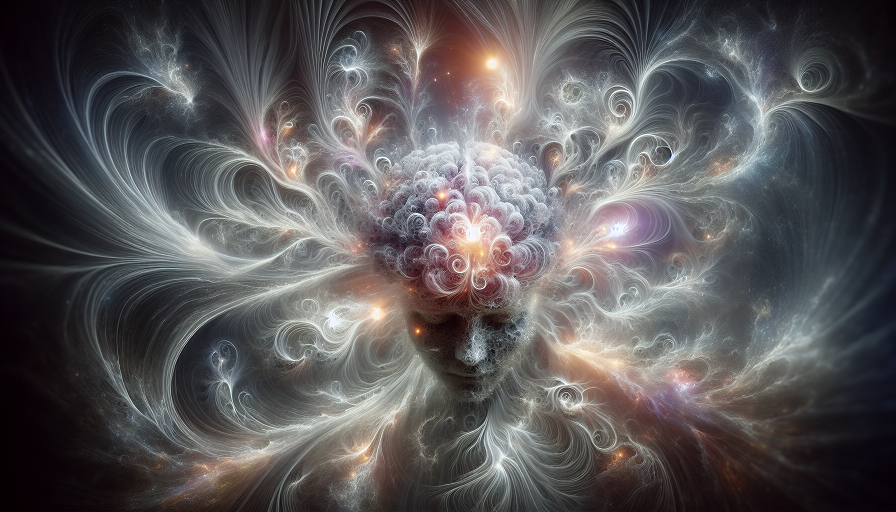You sit down to write. The cursor blinks, the page stretches wide, and suddenly, your once-busy brain goes eerily quiet. You want to fill the page—but instead, you freeze. This reaction isn’t laziness or a lack of ideas. It’s a brain-level response to limitless potential. The blank page isn’t just empty—it’s cognitively intimidating.
From writers and artists to students and professionals, the blank page has haunted generations. But why? What is it about starting from scratch that feels so overwhelming? And what does this mental standoff reveal about how the brain handles pressure, ambiguity, and creativity? Here we look into what happens upstairs when you’re staring down a blank screen—and how to get past it.
The Paradox of Infinite Possibility
A blank page represents freedom. You can go anywhere, write anything, create whatever you like. But that very freedom is part of the problem. The brain doesn’t do well with unbounded choice.
What Happens When There Are Too Many Options:
- Analysis paralysis: The brain stalls while evaluating infinite starting points
- Decision fatigue: Every potential idea competes for attention, draining mental energy
- Fear of being wrong: No starting structure increases the risk of choosing “badly”
The blank page is a paradox: total freedom feels like a trap. Your brain longs for constraints—not to limit creativity, but to give it shape.
Ambiguity and the Threat Response
Ambiguity activates the brain’s threat detection systems. When you don’t know what to do or how to begin, the amygdala interprets that uncertainty as danger—even if the “danger” is just a creative decision.
Key Brain Reactions to Ambiguity:
- Amygdala: Signals stress and hesitation
- Prefrontal cortex: Tries to weigh options but becomes overwhelmed
- Insula: Heightens self-awareness, making you hyper-aware of your own inaction
This is why the blank page can cause a fight-flight-freeze reaction—even though it’s just paper (or pixels).
Perfectionism and the Performance Mindset
Another major player in blank page anxiety is perfectionism. The more pressure you put on that first sentence—or that first brushstroke—the harder it becomes to start. This isn’t just psychological. It’s neurological.
Perfectionism Impacts the Brain By:
- Overactivating the prefrontal cortex (excess planning and inhibition)
- Suppressing the default mode network (reducing spontaneous thought)
- Increasing cortisol levels (making the brain less flexible)
The result? Creative paralysis. The brain becomes so focused on avoiding failure that it can’t explore or risk new directions.
Creativity, the Default Mode Network, and Flow
The default mode network (DMN) is a brain network active during daydreaming, imagination, and idea generation. To fill a blank page, you need to let the DMN do its thing—but perfectionism and stress often suppress it.
For Creativity to Flourish, You Need:
- A sense of safety and freedom to explore
- Low inhibition and relaxed attention
- A willingness to “waste” ideas before finding the good ones
The blank page triggers the opposite: pressure, scrutiny, and hyper-focus. Your creative brain gets jammed trying to be brilliant from word one.
The Power of Small Starts and Constraints
One of the best ways to overcome blank page fear is to reduce the mental load. Give the brain something—anything—to anchor itself to. Constraints, prompts, and even meaningless scribbles can break the paralysis.
Effective Tools to Break Through:
- Timed writing: Set a 5-minute timer and write without stopping
- Use a prompt: Even random ones help narrow your mental field
- Change the medium: Doodle, speak aloud, or type nonsense until real words come
- Set micro-goals: “Write one sentence” is better than “Write something great”
Once the brain starts moving, it’s more likely to enter a creative flow. Action precedes inspiration.
Blank Pages in Other Domains
The fear of a blank canvas isn’t limited to writers. It appears in many forms:
- Starting a new job or business
- Beginning a painting or design project
- Facing an empty spreadsheet or strategy doc
- Launching a podcast or course
In every case, the challenge is the same: turning nothing into something. And the same brain-based tools apply.
Can Nootropics Support Creative Activation?
Certain nootropics may help you get past the blank-page freeze by supporting focus, idea generation, and emotional regulation—key ingredients for creative engagement.
Nootropics That May Help:
- L-Theanine: Calms anxiety and promotes relaxed focus
- Citicoline: Boosts mental clarity and word recall
- Lion’s Mane Mushroom: Encourages neuroplasticity and creative flow
- Rhodiola Rosea: Reduces cognitive fatigue and improves motivation
Used intentionally, these supplements may help unlock momentum and shift your mental state from stuck to expressive.
The blank page isn’t the enemy—it’s a mirror. It reflects your brain’s need for safety, structure, and small wins before it can be bold. Once you understand how your mind responds to emptiness, you can work with it, not against it.
So next time the blank page glares back at you, don’t freeze. Write anything. Draw a line. Make a mess. Your brain doesn’t fear the blank page—it fears standing still. Start moving, and your ideas will catch up.

